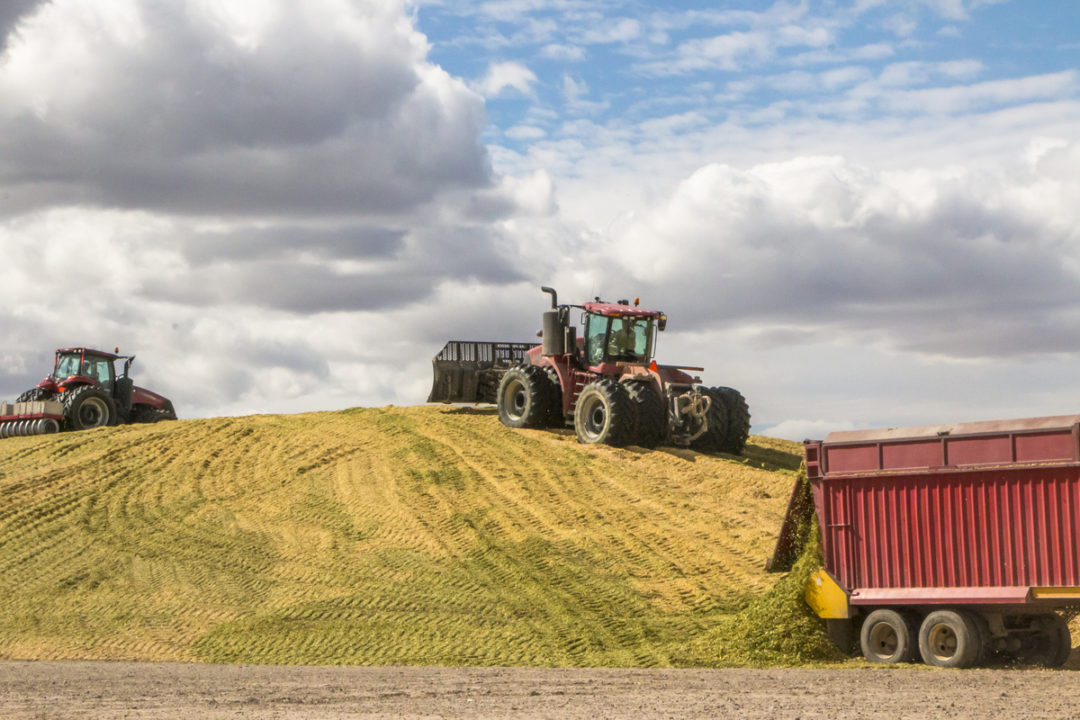To read this article in French, click here.
Every farmer from time to time gets their tractor or farm equipment stuck in the mud. Although it may seem inevitable, there are ways to avoid getting stuck; however, once stuck in the mud it is important to get unstuck in the safest possible way to minimize the risk of an injury or damaging the equipment.
Each farm has its own known soft spots. Whether it be due to water, alkali or another reason, it is best to avoid these spots. Knowing your equipment and recognizing the difference in the way your front end and wheels feel on hard versus soft ground will allow you to recognize when you are in danger of getting stuck before you get in too deep.
In spite of knowing your land and your equipment, sometimes you will still get stuck.
Before attempting to extract the equipment, inspect your recovery tools for any damage including breaks or defects. Do not use recovery straps if there are any burns, tears, holes, broken stitching or any signs of abrasion. If the tiedown straps, clevis or hook has stress cracks or other signs of damage, they are not good to use.
The most important thing to do before attempting to extract equipment is to ensure that you are using the correct equipment for the job. Put the chains away. A recovery rope is a safer alternative to chains when pulling or towing. Even though a tow rope is much safer, it doesn’t mean that it is safe. It is important that the tow rope you use is in good condition and is the correct size and strength.
To effectively extract stuck equipment, you will need to do some quick calculations to establish the minimum recovery capacity or working load limit. You must consider the weight of the equipment (including cargo and any attachments), how deep the equipment is buried in the surface and the slope of the ground where the extraction will occur. Once you have established these numbers, you will be able to choose the recovery equipment that can handle more than the minimum capacity required.
Extraction steps
- Select the correct recovery tools.
- Get the towing vehicle as close as possible to the stuck equipment.
- Use one rope to attach the stuck equipment to the towing vehicle. Never tie ropes together with knots.
- Ensure the tailpipe of the stuck vehicle is not obstructed.
- Raise any attached implements. Disconnect trailers or attached implements if it is possible to do so safely.
- Pull in a straight line.
- Ensure the towing vehicle has good traction.
Always check your equipment once it has been extracted. The deeper the tractor or equipment was in the mud, the more important the inspection is. Pay close attention to the spinner or guard, hoses, fittings, wagon, lights, brake lines, fuel tanks and exhaust systems. Remember to also inspect your recovery tools again for any breaks or damage before storing them.
Clean and dry tiedowns before storing them away to avoid mould or mildew and remember to store all recovery tools in a safe place away from the elements. Do not leave them out, as you risk them deteriorating if they get rained on and under harsh conditions of sunlight. Keeping your recovery tools in good condition will ensure they are available when you need them.
Getting stuck in the mud is frustrating and wastes valuable time; however, it is important to take some time to examine the situation and plan the extraction to ensure it is completed as quickly, effectively and safely as possible. If at any point you are not sure about extracting the equipment or you are worried about damaging the equipment during the extraction process, stop and call a professional. It is better to ask for help and to get the job done safely than risk an injury, incident or worse.
References omitted but are available upon request by sending an email to the editor.











